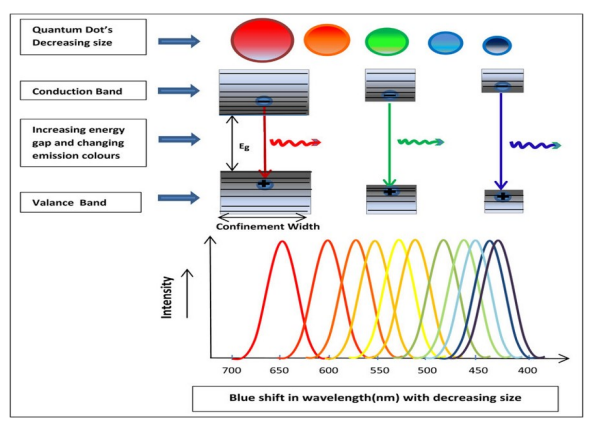Quantum confinement
What is quantum confinement effect? Based on this how nanomaterials classified and give one example for each.
When size of dimensions of the nano material comes in the range of 1-10 nm, which is same as that of deBroglie wavelength of electrons, quantum confinement effect will come into picture. Quantum confinement is change of electronic and optical properties when the material samples is of sufficiently small size - typically 10 nanometers or less. This results splitting of energy levels in quantum dots. Semiconductor band gap increases with decrease in size of the nanocrystal. Quantum confinement of electronic particles in nanocrystals produces unique optical and electronic properties that have the potential to enhance the power conversion efficiency of solar cells for photovoltaic.

- Zero-Dimensional (0D) Nanomaterials: All dimensions (length, width, height) are within the nanoscale. No dimension is outside the nanoscale range. Electrons are confined in all three dimensions.
Example: quantum dots - One-Dimensional (1D) Nanomaterials: Two dimensions are in the nanoscale, one dimension is larger. Electrons are confined in two dimensions, free to move in one direction
Example: Nanorods, nanowires, nanotubes - Two-Dimensional (2D) Nanomaterials: One dimension (thickness) is in the nanoscale, other two dimensions are larger. Electrons are confined in one dimension, free to move in two directions.
Example: Nanosheets, thin films, graphene - Three-Dimensional (3D) Nanomaterials: All dimensions are greater than the nanoscale, but the material has nanoscale features (like pores or grains).No quantum confinement in any direction, but high surface area due to nanostructure.
Example: Bulk nanostructured materials, nanocomposites, nanoporous materials